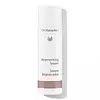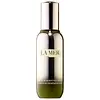What's inside
What's inside
 Key Ingredients
Key Ingredients

No key ingredients
 Benefits
Benefits

 Concerns
Concerns

 Ingredients Side-by-side
Ingredients Side-by-side

Water
Skin ConditioningAlcohol
AntimicrobialPyrus Cydonia Seed Extract
MaskingGlycerin
HumectantTrifolium Pratense Extract
Skin ConditioningAlgin
MaskingKalanchoe Daigremontiana Leaf Extract
HumectantHoney
HumectantParfum
MaskingLimonene
PerfumingGeraniol
PerfumingCitronellol
PerfumingLinalool
PerfumingFarnesol
PerfumingBenzyl Benzoate
AntimicrobialEugenol
PerfumingCitral
PerfumingSucrose Laurate
EmollientCyamopsis Tetragonoloba Gum
Emulsion StabilisingWater
Skin ConditioningAlgae Extract
EmollientDimethicone
EmollientHdi/Trimethylol Hexyllactone Crosspolymer
Hydrogenated Polyisobutene
EmollientCaprylic/Capric/Myristic/Stearic Triglyceride
EmollientDimethicone/Vinyl Dimethicone Crosspolymer
Skin ConditioningPEG-8 Dimethicone
EmulsifyingTriethylhexanoin
MaskingPEG-10 Dimethicone
Skin ConditioningPolysilicone-11
Macadamia Integrifolia Seed Oil
Skin ConditioningDecyl Glucoside
CleansingGlyceryl Triacetyl Ricinoleate
EmollientGlycerin
HumectantNiacinamide
SmoothingSesamum Indicum Seed Oil
EmollientMedicago Sativa Seed Powder
Skin ConditioningHelianthus Annuus Seedcake
AbrasivePrunus Amygdalus Dulcis Seed Meal
AbrasiveEucalyptus Globulus Leaf Oil
PerfumingSodium Gluconate
Skin ConditioningCopper Gluconate
Skin ConditioningCalcium Gluconate
HumectantMagnesium Gluconate
Skin ConditioningZinc Gluconate
Skin ConditioningTocopheryl Succinate
AntioxidantNiacin
SmoothingSesamum Indicum Seed Powder
Skin ConditioningCitrus Aurantifolia Peel Extract
CleansingNarcissus Tazetta Bulb Extract
AstringentCitrus Reticulata Peel Extract
Skin ConditioningHumulus Lupulus Extract
AntimicrobialMimosa Tenuiflora Bark Extract
Skin ProtectingRosmarinus Officinalis Leaf Extract
AntimicrobialMelilotus Officinalis Extract
AstringentHydrolyzed Wheat Protein
Skin ConditioningHydrolyzed Yeast Protein
Skin ConditioningMarrubium Vulgare Extract
Skin ConditioningEryngium Maritimum Extract
TonicBifida Ferment Lysate
Skin ConditioningPolygonum Cuspidatum Root Extract
AntioxidantAdenosine Phosphate
Skin ConditioningAcetyl Carnitine Hcl
Skin ConditioningCreatine
Skin ConditioningCladosiphon Okamuranus Extract
Skin ConditioningPunica Granatum Fruit Juice
MaskingNordihydroguaiaretic Acid
AntioxidantLactis Proteinum
Skin ConditioningEthylbisiminomethylguaiacol Manganese Chloride
AntioxidantLinolenic Acid
CleansingCaffeine
Skin ConditioningAlcaligenes Polysaccharides
EmollientGelidiella Acerosa Extract
Skin ProtectingDipotassium Glycyrrhizate
HumectantVitis Vinifera Seed Extract
AntimicrobialAcetyl Hexapeptide-8
HumectantGlycine Soja Seed Extract
Skin ConditioningGold
Cosmetic ColorantHydrolyzed Soy Protein
HumectantHydrogenated Lecithin
EmulsifyingPhenyl Trimethicone
Skin ConditioningAmmonium Acryloyldimethyltaurate/Beheneth-25 Methacrylate Crosspolymer
Emulsion StabilisingIsododecane
EmollientHypnea Musciformis Extract
Skin ProtectingTocopheryl Acetate
AntioxidantSigesbeckia Orientalis Extract
Skin ConditioningDipalmitoyl Hydroxyproline
Skin ConditioningAcetyl Glucosamine
Skin ConditioningLinoleic Acid
CleansingMicrococcus Lysate
Skin ConditioningTourmaline
Glycosaminoglycans
EmollientSoy Amino Acids
Skin ConditioningButylene Glycol
HumectantLaminaria Digitata Extract
Skin ProtectingYeast Extract
Skin ConditioningTrisiloxane
Skin ConditioningTartaric Acid
BufferingTetraacetylphytosphingosine
Skin ConditioningDextrin
AbsorbentTocopherol
AntioxidantPentylene Glycol
Skin ConditioningBis-Stearyl Dimethicone
EmollientLaureth-12
EmulsifyingPotassium Sorbate
PreservativeParfum
MaskingCaprylyl Glycol
EmollientLecithin
EmollientHydroxypropyl Cyclodextrin
MaskingMaltodextrin
AbsorbentCyclodextrin
AbsorbentAlcohol Denat.
AntimicrobialSodium Hydroxide
BufferingXanthan Gum
EmulsifyingSilica
AbrasiveCitric Acid
BufferingGlutathione
Polymethylsilsesquioxane
Disodium EDTA
BHT
AntioxidantPhenoxyethanol
PreservativeLimonene
PerfumingLinalool
PerfumingHydroxycitronellal
PerfumingCitronellol
PerfumingGeraniol
PerfumingCI 61570
Cosmetic ColorantWater, Algae Extract, Dimethicone, Hdi/Trimethylol Hexyllactone Crosspolymer, Hydrogenated Polyisobutene, Caprylic/Capric/Myristic/Stearic Triglyceride, Dimethicone/Vinyl Dimethicone Crosspolymer, PEG-8 Dimethicone, Triethylhexanoin, PEG-10 Dimethicone, Polysilicone-11, Macadamia Integrifolia Seed Oil, Decyl Glucoside, Glyceryl Triacetyl Ricinoleate, Glycerin, Niacinamide, Sesamum Indicum Seed Oil, Medicago Sativa Seed Powder, Helianthus Annuus Seedcake, Prunus Amygdalus Dulcis Seed Meal, Eucalyptus Globulus Leaf Oil, Sodium Gluconate, Copper Gluconate, Calcium Gluconate, Magnesium Gluconate, Zinc Gluconate, Tocopheryl Succinate, Niacin, Sesamum Indicum Seed Powder, Citrus Aurantifolia Peel Extract, Narcissus Tazetta Bulb Extract, Citrus Reticulata Peel Extract, Humulus Lupulus Extract, Mimosa Tenuiflora Bark Extract, Rosmarinus Officinalis Leaf Extract, Melilotus Officinalis Extract, Hydrolyzed Wheat Protein, Hydrolyzed Yeast Protein, Marrubium Vulgare Extract, Eryngium Maritimum Extract, Bifida Ferment Lysate, Polygonum Cuspidatum Root Extract, Adenosine Phosphate, Acetyl Carnitine Hcl, Creatine, Cladosiphon Okamuranus Extract, Punica Granatum Fruit Juice, Nordihydroguaiaretic Acid, Lactis Proteinum, Ethylbisiminomethylguaiacol Manganese Chloride, Linolenic Acid, Caffeine, Alcaligenes Polysaccharides, Gelidiella Acerosa Extract, Dipotassium Glycyrrhizate, Vitis Vinifera Seed Extract, Acetyl Hexapeptide-8, Glycine Soja Seed Extract, Gold, Hydrolyzed Soy Protein, Hydrogenated Lecithin, Phenyl Trimethicone, Ammonium Acryloyldimethyltaurate/Beheneth-25 Methacrylate Crosspolymer, Isododecane, Hypnea Musciformis Extract, Tocopheryl Acetate, Sigesbeckia Orientalis Extract, Dipalmitoyl Hydroxyproline, Acetyl Glucosamine, Linoleic Acid, Micrococcus Lysate, Tourmaline, Glycosaminoglycans, Soy Amino Acids, Butylene Glycol, Laminaria Digitata Extract, Yeast Extract, Trisiloxane, Tartaric Acid, Tetraacetylphytosphingosine, Dextrin, Tocopherol, Pentylene Glycol, Bis-Stearyl Dimethicone, Laureth-12, Potassium Sorbate, Parfum, Caprylyl Glycol, Lecithin, Hydroxypropyl Cyclodextrin, Maltodextrin, Cyclodextrin, Alcohol Denat., Sodium Hydroxide, Xanthan Gum, Silica, Citric Acid, Glutathione, Polymethylsilsesquioxane, Disodium EDTA, BHT, Phenoxyethanol, Limonene, Linalool, Hydroxycitronellal, Citronellol, Geraniol, CI 61570
Alternatives
Ingredients Explained
These ingredients are found in both products.
Ingredients higher up in an ingredient list are typically present in a larger amount.
Citronellol is used to add fragrance/parfum to a product. It is often derived from plants such as roses. In fact, it can be found in many essential oils including geranium, lavender, neroli, and more. The scent of Citronellol is often described as "fresh, grassy, and citrus-like".
Since the Citronellol molecule is already unstable, Citronellol becomes irritating on the skin when exposed to air.
Citronellol is a modified terpene. Terpenes are unsaturated hydrocarbons found in plants. They make up the primary part of essential oils.
Citronellol is not able to be absorbed into deeper layers of the skin. It has low permeability,
Citronellol is also a natural insect repellent.
Learn more about CitronellolGeraniol is used to add fragrance/parfum to a product. It is the main component of citronellol. It is a monoterpenoid and an alcohol.
Monoterpenes are naturally found in many parts of different plants.
Geraniol can be found in many essential oils including Rose Oil and Citronella Oil. The scent of Geraniol is often described as "rose-like". Many foods also contain Geraniol for fruit flavoring.
Geraniol can irritate the skin when exposed to air. However, irritation depends on the ability of geraniol to penetrate into the skin. In general, geraniol is not able to penetrate skin easily.
Geraniol is colorless and has low water-solubility. However, it is soluble in common organic solvents.
Like citronellol, it is a natural insect repellent.
2,6-Octadien-1-ol, 3,7-dimethyl-, (2E)-
Learn more about GeraniolGlycerin is already naturally found in your skin. It helps moisturize and protect your skin.
A study from 2016 found glycerin to be more effective as a humectant than AHAs and hyaluronic acid.
As a humectant, it helps the skin stay hydrated by pulling moisture to your skin. The low molecular weight of glycerin allows it to pull moisture into the deeper layers of your skin.
Hydrated skin improves your skin barrier; Your skin barrier helps protect against irritants and bacteria.
Glycerin has also been found to have antimicrobial and antiviral properties. Due to these properties, glycerin is often used in wound and burn treatments.
In cosmetics, glycerin is usually derived from plants such as soybean or palm. However, it can also be sourced from animals, such as tallow or animal fat.
This ingredient is organic, colorless, odorless, and non-toxic.
Glycerin is the name for this ingredient in American English. British English uses Glycerol/Glycerine.
Learn more about GlycerinLimonene is a fragrance that adds scent and taste to a formulation.
It's found in the peel oil of citrus fruits and other plants such as lavender and eucalyptus. The scent of limonene is generally described as "sweet citrus".
Limonene acts as an antioxidant, meaning it helps neutralize free radicals.
When exposed to air, oxidized limonene may sensitize the skin. Because of this, limonene is often avoided by people with sensitive skin.
The term 'fragrance' is not regulated in many countries. In many cases, it is up to the brand to define this term. For instance, many brands choose to label themselves as "fragrance-free" because they are not using synthetic fragrances. However, their products may still contain ingredients such as essential oils that are considered a fragrance.
Learn more about LimoneneLinalool is a fragrance and helps add scent to products. It's derived from common plants such as cinnamon, mint, citrus, and lavender.
Like Limonene, this ingredient oxidizes when exposed to air. Oxidized linalool can cause allergies and skin sensitivity.
This ingredient has a scent that is floral, spicy tropical, and citrus-like.
Learn more about LinaloolParfum is a catch-all term for an ingredient or more that is used to give a scent to products.
Also called "fragrance", this ingredient can be a blend of hundreds of chemicals or plant oils. This means every product with "fragrance" or "parfum" in the ingredients list is a different mixture.
For instance, Habanolide is a proprietary trade name for a specific aroma chemical. When used as a fragrance ingredient in cosmetics, most aroma chemicals fall under the broad labeling category of “FRAGRANCE” or “PARFUM” according to EU and US regulations.
The term 'parfum' or 'fragrance' is not regulated in many countries. In many cases, it is up to the brand to define this term.
For instance, many brands choose to label themselves as "fragrance-free" because they are not using synthetic fragrances. However, their products may still contain ingredients such as essential oils that are considered a fragrance by INCI standards.
One example is Calendula flower extract. Calendula is an essential oil that still imparts a scent or 'fragrance'.
Depending on the blend, the ingredients in the mixture can cause allergies and sensitivities on the skin. Some ingredients that are known EU allergens include linalool and citronellol.
Parfum can also be used to mask or cover an unpleasant scent.
The bottom line is: not all fragrances/parfum/ingredients are created equally. If you are worried about fragrances, we recommend taking a closer look at an ingredient. And of course, we always recommend speaking with a professional.
Learn more about ParfumWater. It's the most common cosmetic ingredient of all. You'll usually see it at the top of ingredient lists, meaning that it makes up the largest part of the product.
So why is it so popular? Water most often acts as a solvent - this means that it helps dissolve other ingredients into the formulation.
You'll also recognize water as that liquid we all need to stay alive. If you see this, drink a glass of water. Stay hydrated!
Learn more about Water